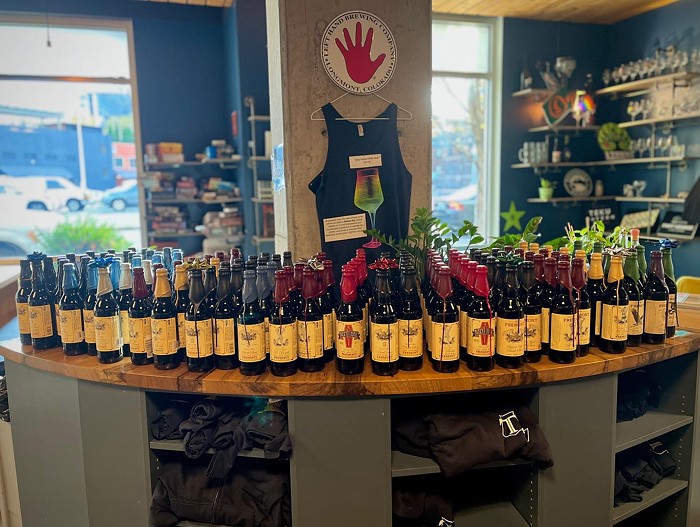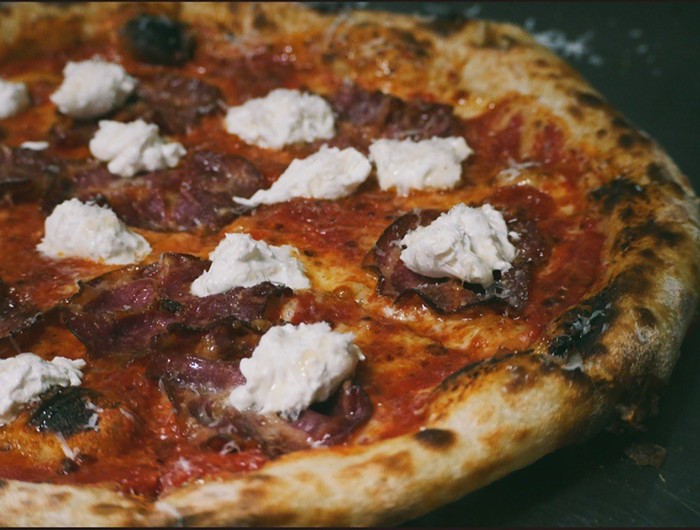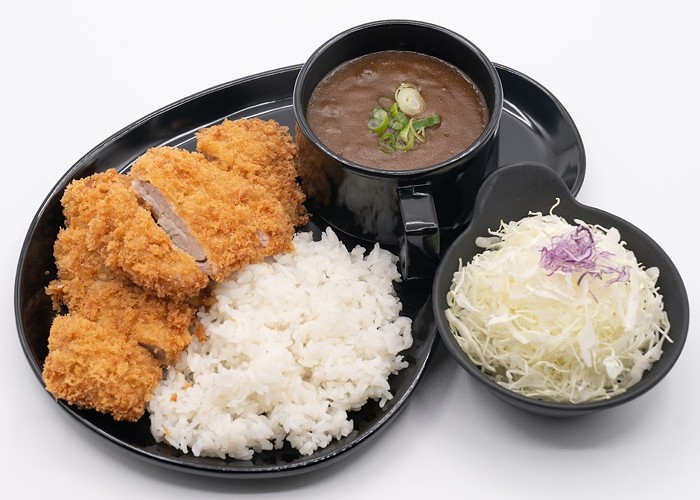
Inside the lively, bustling Phnom Penh Noodle House dining room, Diane Le gestures for me to sit down at the table where her husband, Vinh, and their young twin sons are waiting. Diane’s older sister and co-manager of Phnom Penh, Dawn Ung, continues running the restaurant as we eat, as she has done in the years since her father and founder of Phnom Penh, Sam Ung, retired and moved back to Cambodia.
I inhale the scent of something delicious, and my attention snaps back to the table because the first appetizer is here: Phnom Penh's signature chicken wings, glazed in honey-garlic sauce, sprinkled in green onions and jalapeño, and topped off by a dusting of black pepper. Oh, and they are good—simultaneously crunchy and tender, sweet with a light zing, flavorful but not over-spiced.
In between bites and family conversation, a Cambodian-American oral history of this family and their restaurant rises above the aromas of home-style cooking. It fills the room with a different kind of warmth and I swiftly realize that I have not just been invited to a meal, but to a family dinner. And at family dinners, you talk about everything—the good and bad.
“It’s sad to be closing this door,” said Le of the restaurant’s impending close on May 28. “But it will allow us time to focus on the family [Dawn’s son, Devin Cropp, was hit by a car in September of last year and experienced significant brain damage, among other severe injuries to his neck, back, and spinal cord]. It’s sad because you’re closing this chapter, but should we really be closing this chapter? Will another door ever open? Will we see our family members that visit us every weekend again? We’ll definitely miss all those interactions. It’s bittersweet.”
Phnom Penh’s family of customers and community supporters began with one man, and Le relates stories about her father, Sam Ung.
“My dad built the business with the lens of always giving back to the community,” she continues. “He was very humble, but he knew that his success did not come about on his own. He had the support of so many to make it happen, so as a business owner and operator in the community, he was always doing whatever he could to give back whenever he could. Volunteering his time, donating or leading cooking classes, helping out with the [Wing Luke] museum… he did whatever he could…. we hope to be remembered as a friend, a family member who gave themselves to what they loved.”
Le tells me how Ung immigrated to the States from Cambodia in 1980, fleeing the Khmer Rouge. Ung’s dream was to have his own restaurant (his parents had one in Cambodia), and so he started working, juggling two jobs (Ivar’s Acres of Clams and the Rainier Club) for seven years before opening Phnom Penh in 1987 with then-wife Kim and his two daughters.
“My dad used to always say, 'You girls always complain about working here, but you don’t realize that you are learning life-long skills,'” said Diane. “And of course you don’t realize anything that your parents teach you until you’re an adult, and that’s true. Now that I am a mother, I don’t know how they did it. How did we go on vacations every year? It is truly amazing, it is a story about refugees coming to the States and trying to make that American dream happen, and he did it, and he’s tired, and now he is back in Cambodia.”
The inside of Phnom Penh is a mix of cultures, lineages, and histories. In the same restaurant adorned with traditional and contemporary Cambodian art lies a unique wall that was Ung’s pride and joy—a collection of photographs and news stories about the various celebrities and people of renown that have visited the restaurant.
“He is SO proud of that wall! It is pretty amazing,” said Le. “At the Rainier Club, he cooked for Al Gore and Bill Clinton, and here he had the celebrity wall with the picture frames of everyone who has come by.”
However, Ung was not satisfied with only having a wall: “He made a shirt out of it!” Said Le. “He used to wear [the shirts] as a part of his uniform at the restaurant, it was so funny!”
Le searches through a box for the t-shirt while retrieving some of the numerous possessions that have been collected over the years at Phnom Penh: menus, cards, pictures. For the woman who grew up in the International District and helped run an iconic Cambodian family restaurant for over 30 years, this feels like leaving home.
“It was our neighborhood,” said Le. “We were just little girls running around and growing up in Chinatown. For a while, my grandmother lived in the Bush Hotel, my other grandmother lived in the other apartment building—it wasn’t just businesses, it was truly a neighborhood with residents.”
However, there may soon be a time where Phnom Penh is a part of the neighborhood again: “If and when our next idea comes up for the future of Phnom Penh,” said Le, “we will look around at Kickstarter or a fundraiser that gets our fans engaged again. We hope it will be just a ‘see-you later,’ but there are so many things that we need to work on in order for it to happen. We are definitely trying, but if all the puzzles work together, then we won’t be gone for too long. We want to stay true to what my dad started with the core seven [dishes from when the restaurant first opened], but then also add a twist to our generation, of what it is like to eat out and bring in the new Cambodian experience.”
Normal Phnom Penh hours are 9 am - 8 pm (closed Wednesdays). Phnom Penh's dining room opens for the last time on May 28. Its closing celebration happens later that evening, from 4 to 7 pm.


















